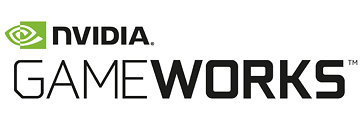Monday, March 14th 2016

NVIDIA Launches GameWorks SDK 3.1
NVIDIA today announced worldwide availability of the NVIDIA GameWorks software development kit (SDK) 3.1, which introduces three groundbreaking graphics techniques for shadows and lighting as well as two new physical simulation algorithms released as betas.
"It's our passion for gaming that drives us to tackle the technical problems presented by real-time rendering and simulation," said Tony Tamasi, senior vice president of content and technology at NVIDIA. "Our GameWorks technologies push the boundaries of what's possible in real time, enabling developers to ship their games with state of the art special effects and simulations."The three new GameWorks rendering techniques for lighting and shadows include:
More information on NVIDIA GameWorks is available at developer.nvidia.com.
"It's our passion for gaming that drives us to tackle the technical problems presented by real-time rendering and simulation," said Tony Tamasi, senior vice president of content and technology at NVIDIA. "Our GameWorks technologies push the boundaries of what's possible in real time, enabling developers to ship their games with state of the art special effects and simulations."The three new GameWorks rendering techniques for lighting and shadows include:
- NVIDIA Volumetric Lighting - an advanced lighting technique that simulates how light behaves as it scatters through the air and atmosphere. NVIDIA Volumetric Lighting was first introduced in the hit video game Fallout 4.
- NVIDIA Hybrid Frustum Traced Shadows (HFTS) - an algorithm for drawing high-fidelity shadows that transition smoothly from hard shadows near the occluding object, to proper soft shadows in regions farther away. HFTS debuted in the hit video game Tom Clancy's The Division.
- NVIDIA Voxel Accelerated Ambient Occlusion (VXAO) - NVIDIA's highest quality algorithm for real-time ambient occlusion, VXAO is a shading technique that adds depth and realism to any scene. It surpasses older techniques by calculating shadows in world-space using all scene geometry, as opposed to screen space techniques that can only shadow from geometry visible to the camera. VXAO debuted in the hit video game Rise of the Tomb Raider.
- NVIDIA PhysX-GRB - a new implementation of NVIDIA's popular PhysX rigid body dynamics SDK, which has been used in hundreds of games. This hybrid CPU/GPU physics pipeline improves performance by a factor of up to 6X for moderate to heavy simulation loads.
- NVIDIA Flow - a computational fluid dynamics algorithm that simulates and renders combustible fluids such as fire and smoke. Unlike previous methods, Flow isn't limited to simulation of the fluids inside a bounding box.
More information on NVIDIA GameWorks is available at developer.nvidia.com.

17 Comments on NVIDIA Launches GameWorks SDK 3.1
Slow
Down
Kit
hell why not throw in floop di doop and smerk li berg as well
:mad:
And where would gaming be today without GameWorks? Even though GameWorks isn't perfect, there is still more good in there than "GPUOpen" provides.
But I don't agree with your statement about GPUOpen.
If you go to the Professional Compute section on GPUOpen website you will find a lot of frameworks and libraries to play with. It's not in the state-of-the-art library (and, especially, documentation wise) like CUDA, OpenCL, or PhysX provide but it's a good start and to see that AMD embracing and supporting more established frameworks and libraries (like CUDA, Caffe, or OpenVX) is encouraging and always a positive.
It's almost as bad as IA investigating police corruption.
They're all in on it. Throw some cash around the problem erodes.
- Slows down Kepler
Version 3.1 main feature
- Slows down Maxwell
After seeing tressfx 3.0 in action (rise of the tomb raider) slowworks just needs to die.... performance difference is staggering..